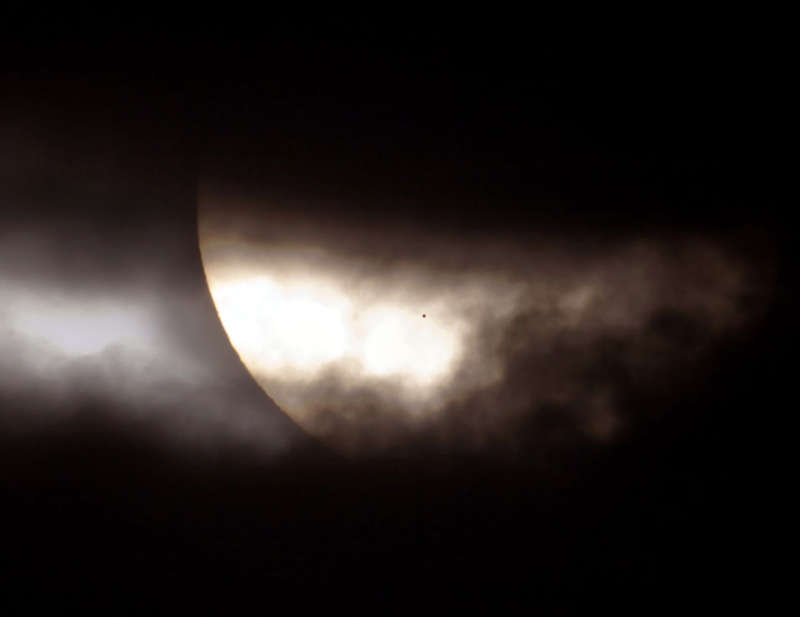
|
Credit & Copyright: David Cortner
Explanation:
What's that dot on the Sun?
If you look closely, it is almost perfectly round.
The dot is the result of an unusual type of
solar eclipse that occurred in 2006.
Usually it is the
Earth's Moon that eclipses the Sun.
This time, the planet
Mercury
took a turn.
Like the approach to New Moon before a
solar eclipse,
the phase of Mercury became a continually thinner
crescent as the planet
progressed toward an alignment with the Sun.
Eventually the phase of
Mercury dropped to zero and
the dark spot of Mercury crossed our parent star.
The situation could technically be labeled a Mercurian
annular
eclipse with an extraordinarily large
ring of fire.
From above the
cratered planes
of the night side of Mercury, the Earth appeared in its fullest phase.
Hours later, as Mercury continued in its orbit, a slight
crescent phase appeared again.
The next Mercurian solar eclipse
will occur in 2016.
|
January February March April May June July August September October November December |
| ||||||||||||||||||||||||||||||||||||||||||||||||
NASA Web Site Statements, Warnings, and Disclaimers
NASA Official: Jay Norris. Specific rights apply.
A service of: LHEA at NASA / GSFC
& Michigan Tech. U.
Based on Astronomy Picture
Of the Day
Publications with keywords: Mercury - Sun - transit
Publications with words: Mercury - Sun - transit
See also:
- APOD: 2024 May 28 Á Solar X Flare as Famous Active Region Returns
- APOD: 2024 May 26 Á A Solar Filament Erupts
- APOD: 2024 February 19 Á Looking Sideways from the Parker Solar Probe
- Circling the Sun
- APOD: 2023 December 11 Á Solar Minimum versus Solar Maximum
- APOD: 2023 November 19 Á Space Station, Solar Prominences, Sun
- APOD: 2023 October 25 Á Gone in 60 Seconds: A Green Flash Sunset
